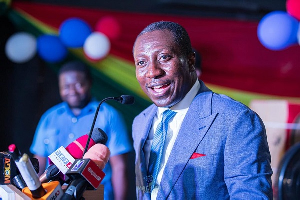US President Donald Trump’s decision to nominate economist Judy Shelton for one of the vacant positions on the Federal Reserve Board has put the future of central bank independence back on the agenda.
Shelton has cast doubt on the desirability of, and legal basis for, Fed independence, saying last year, “I don’t see any reference to independence in the legislation that has defined the role of the Federal Reserve.” And she has argued for “a more coordinated relationship with both Congress and the President.” If Fed policy were “coordinated” with Trump, then it is fairly clear who would be calling the shots.
Of course, one new Fed governor could not upturn decades of practice. But there are suggestions that if appointed, Shelton might replace Jay Powell when his term comes up for renewal in 2022, leaving a fox in charge of the chicken coop.
It is not only in the US that central-bank independence is under threat. In Turkey, President Recep Tayyip Erdo?an fired his governor last year, saying that “we told him several times to cut interest rates,” but he did not oblige.
In India, the government asked the Reserve Bank to hand over some of its reserves, and Governor Urjit Patel resigned “for personal reasons,” and his key deputy followed soon after with a broadside directed at Prime Minister Narendra Modi’s administration: “governments that do not respect central bank independence will sooner or later incur the wrath of the financial markets.”
Central banks around the world are worried by these straws in the wind. Otmar Issing, the first chief economist of the European Central Bank, has written of the “the uncertain future of central bank independence.”
The ECB’s then-president, Mario Draghi, was moved to issue a firm defense of the concept before he left his post. The Bank for International Settlements has noted “the extraordinary burden placed on central banking since the [2008 global financial] crisis,” and warned that central banks cannot deliver on the expectations people have. Joachim Fels of Pimco has concluded that “the heyday of central bank independence now lies behind us.”
Are these prophets of doom correct? Will we soon see control of interest rates back in the self-interested hands of finance ministries? In the words of the song, was central bank independence just a silly phase we were going through?
I think not. The most recent global survey, by the economists Nergiz Dincer and Barry Eichengreen, though admittedly conducted in 2014, shows that there is still a “steady movement in the direction of greater transparency and independence over time (and) little indication these trends are being rethought.”
One might have some grounds for skepticism about the measures of independence they use – according to their model, Kyrgyzstan boasts the world’s most independent central bank – but they can find no cases where changes to legislation bringing the central bank back under political control have been implemented.
In the West, while Trump has huffed and puffed, he appointed Powell, a man with conventional instincts and a backbone. British Prime Minister Boris Johnson resisted the temptation to appoint a Brexit supporter to the Bank of England and named a veteran BOE insider, Andrew Bailey, who has independence in his bones. In the eurozone, a similarly neutral choice emerged as Draghi’s successor, and a change in the ECB’s status would require a new European Union treaty. The chances of that are vanishingly small.
EU leaders show no indication of taking the risk of opening up the constitution to further referenda, as would be necessary in some countries. Furthermore, some of the political pressure for action has diminished.
Trust in the ECB fell sharply after the eurozone crisis nearly a decade ago, but has recovered in most countries in the last couple of years. Even in Greece, the ECB is trusted more than the national government.
There has, it is true, been a change in political rhetoric. After a long period in which governments resisted any commentary on interest-rate decisions, some have now become more vocal. Jacob Rees-Mogg, the Conservative leader in the House of Commons, dubbed Mark Carney, the outgoing BOE governor, a “second-tier Canadian politician” who failed to get a job at home, after Carney disagreed with Rees-Mogg’s economic judgment on the costs of Brexit. And Trump has characteristically weighed in with tweeted criticism of the Fed.
Should central banks regard this renewed disputatiousness as a bad and dangerous thing? They may, if they wish, but I suspect they are pushing water uphill. We have moved into a less respectful age, which is not surprising, given the mistakes made by central banks (and others) in the run-up to the 2008 crisis.
Instead of bemoaning the surge of comment and challenge, central banks need to raise their game, enhance their transparency, and get better at explaining and justifying their actions and decisions.
Andy Haldane, the BOE’s chief economist, has shown that much of what central bankers say is incomprehensible to all but a small proportion of the population.
Only 2% of the population can readily understand the minutes of the Fed’s Open Market Committee, which sets interest rates, while 70% can understand a Trump campaign speech. That gap needs to be closed, and central banks should make their work more accessible to the public. Maybe a collective trip to Kyrgyzstan is in order to observe best practices in action.
Opinions of Sunday, 1 March 2020
Columnist: Howard Davies, Royal Bank of Scotland Chairman



















